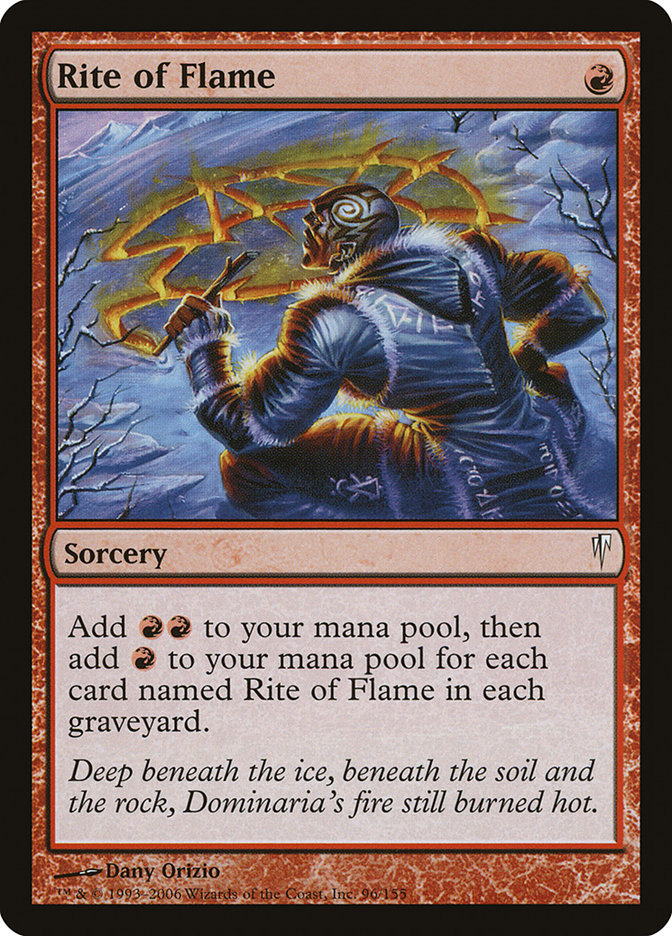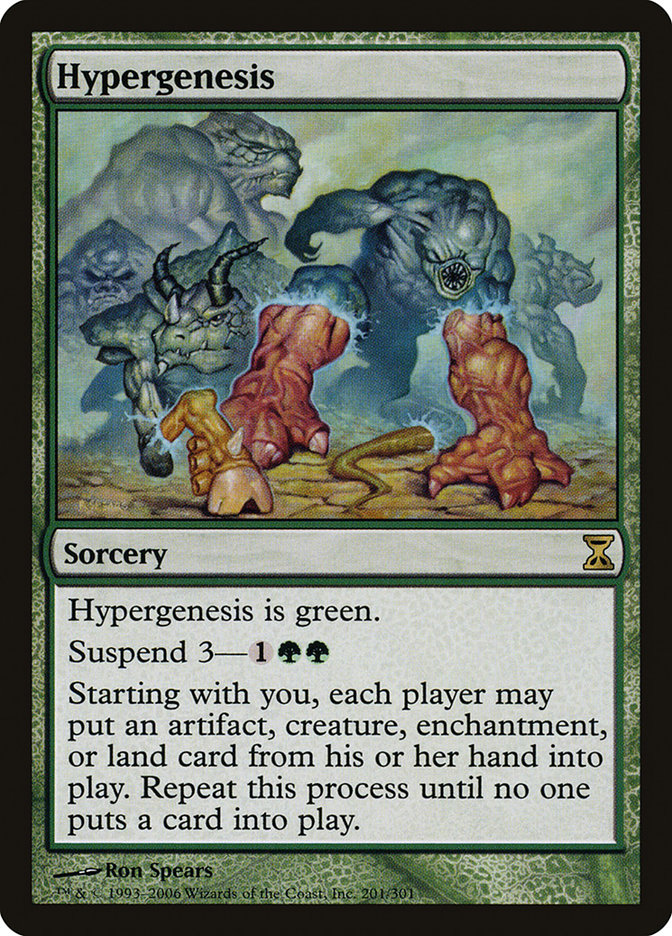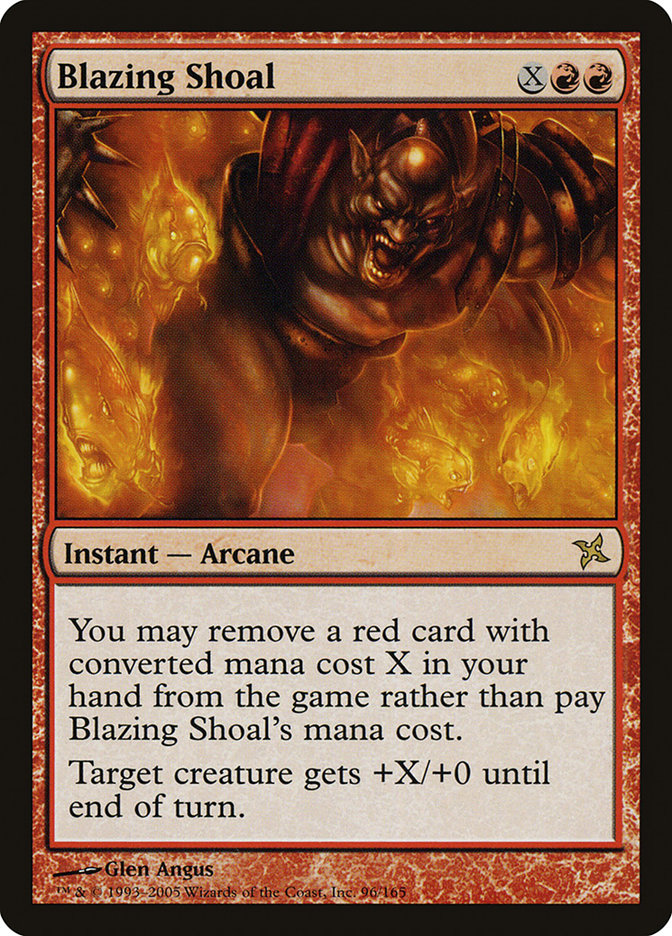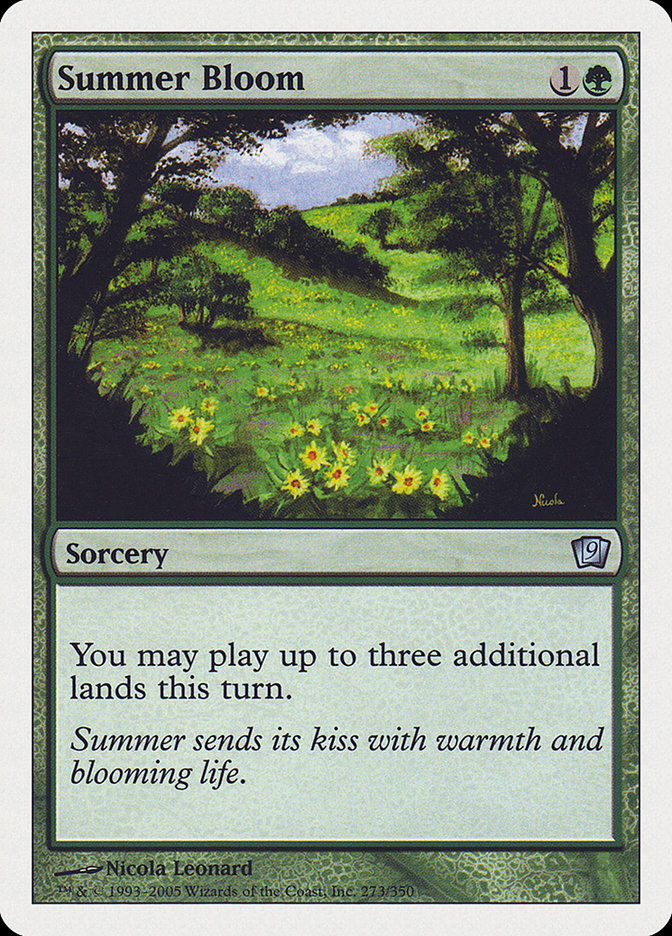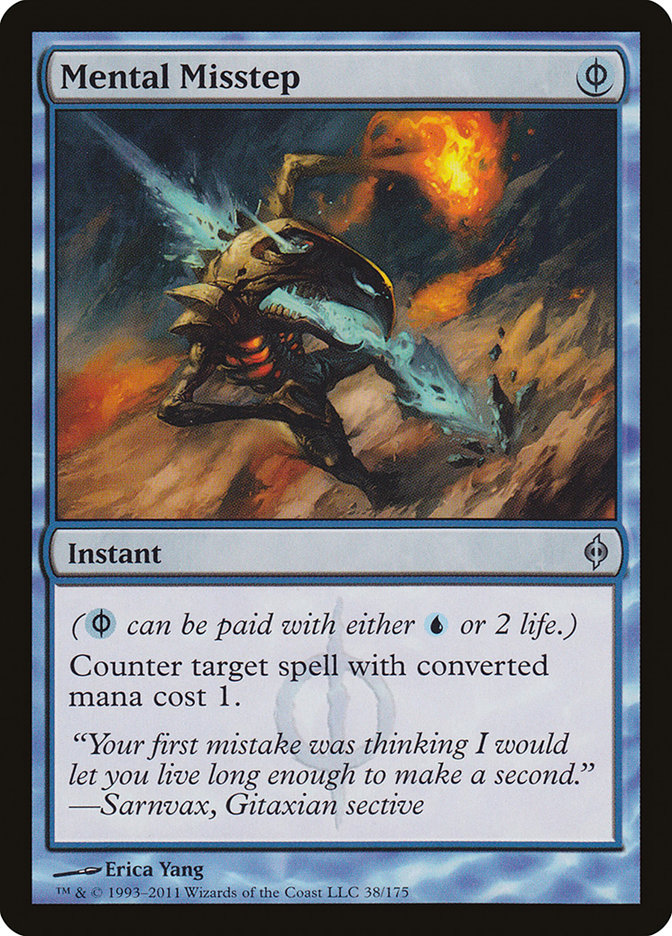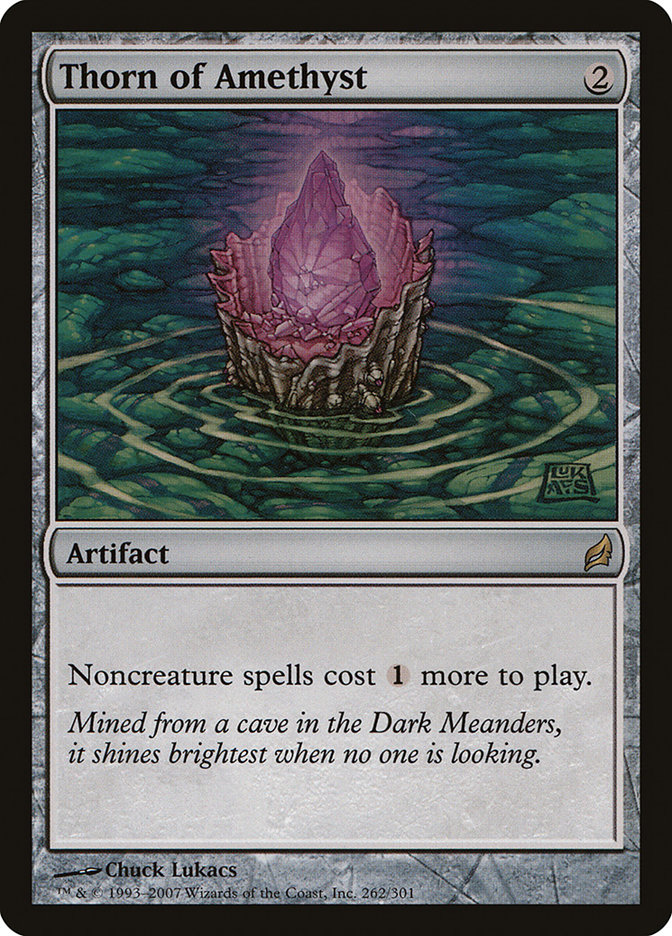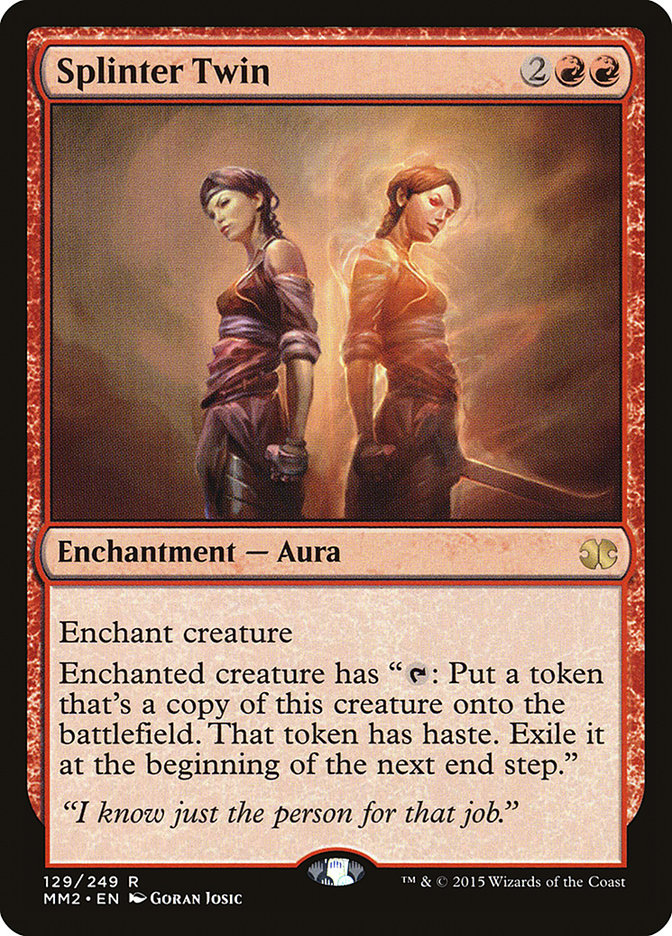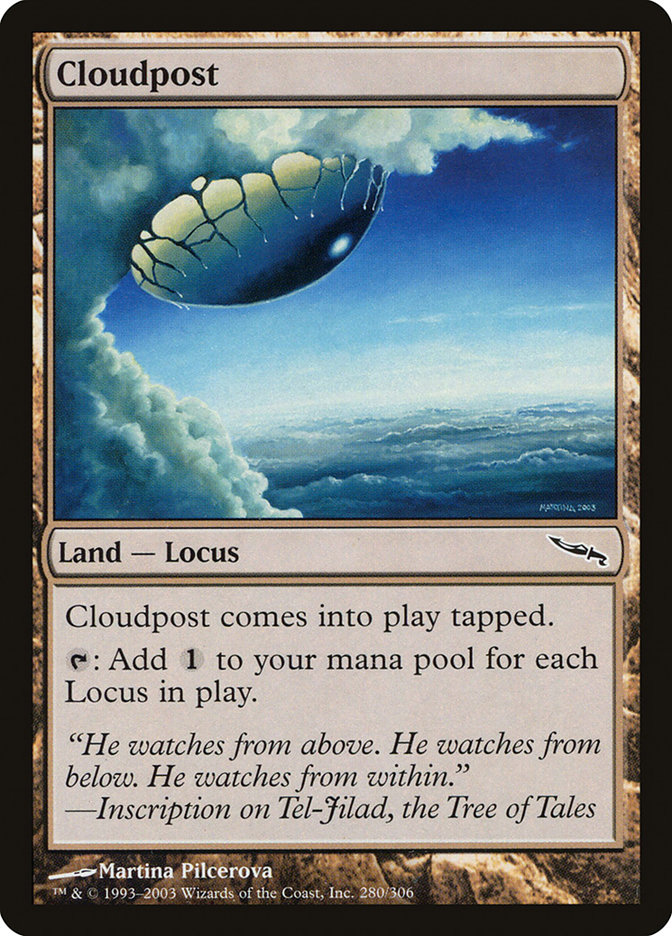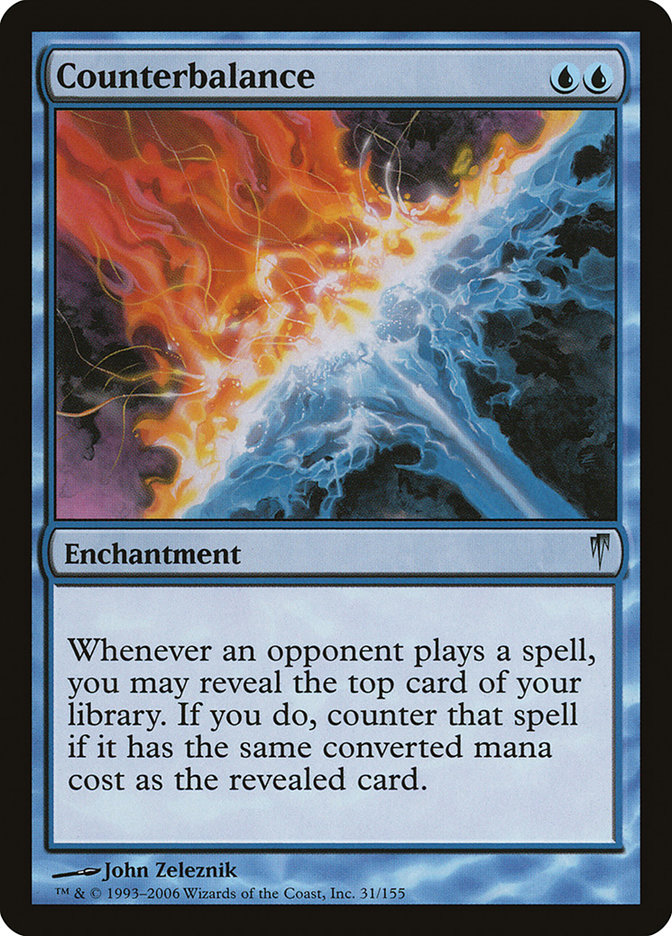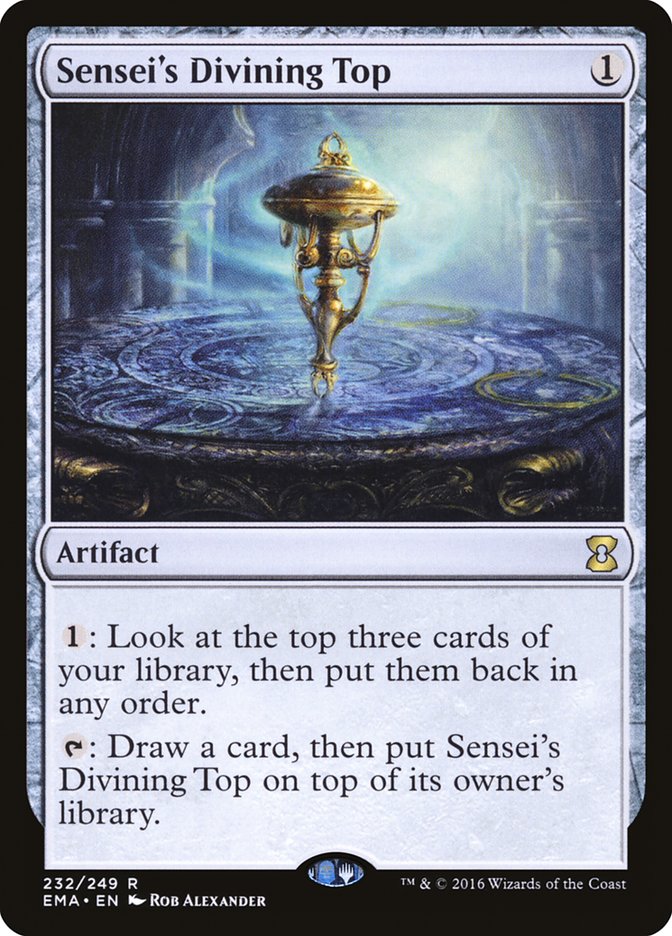There’s obviously a ton of space to explore in No Banned List Modern, since
it’s a format that the community at large has never been seriously
incentivized to work on. And without online support, it’s difficult for
most players to test for, so for those of us without personal connections
with a group of players interested in seriously testing the format, we’ll
have to rely largely on theory to prepare for the upcoming tournament at #SCGCON.
So how does one even begin to theorize about such a format?
I find that it’s best to start at level 0: What is the most powerful thing
you can do in the format? In this case, I’d start by asking which deck has
the fastest and most reliable goldfish kill. I’d guess that the fast decks
in the format are:
- Storm
- Glimpse of Nature/Skullclamp Elves
- Hypergenesis
- Dredge
- Amulet Bloom
- Blazing Shoal Infect
- Eggs
- Affinity
I originally imagined that Elves would be faster than it is, but without
Birchlore Rangers or Wirewood Symbiote, it’s too hard to reliably assemble
a mana engine, and Skullclamp activations aren’t free. Even trying things
like Chrome Mox or Simian Spirit Guide, I think it’s actually an
inconsistent turn 3 deck, and it almost wants me to explore some kind of
Elf/Stoneforge Mystic Skullclamp/Jitte grindy combo/aggro deck.
Between Baral, Chief of Compliance, Pyromancer Ascension, Gifts Ungiven,
and Past in Flames, I have no idea what the right way to build Storm with
Rite of Flame, Seething Song, Ponder, Preordain, and Gitaxian Probe is.
There are enough rituals and good cantrips that you have a ton of
flexibility on the exact mix, and I simply don’t know what’s right. I’m
pretty sure that if your goal is to come as close as possible to winning on
turn 3 against a goldfish 100% of the time, Storm is the best way to do it.
Hypergenesis is probably the best competitor for that title, but I imagine
that too many of its hands need another turn or two to actually finish
someone off after resolving Hypergenesis, since you don’t really get to
choose which particular finishers you happen to draw, and they don’t all
have haste.
Dredge is another fairly large question mark for me in terms of the exact
build/kill, but I’m guessing Legacy/Vintage has basically solved what you
should be doing with your Dread Return, and I’m guessing you should also be
able to reliably set this up on turn 3 as well, so I’m thinking turn 3 is
basically the fundamental turn of this format, which is good, because it’s
slow enough that it feels like the opponent can actually try to disrupt you
in that time.
If your goal is to turn 2 as often as possible, first of all, you have to
accept that I don’t think you’re breaking something like 25% (and even that
seems like a stretch), and I think your best options are Storm, Amulet
Bloom, and Blazing Shoal Infect. All in Glistener Elf/Spoils of the Vault
Blazing Shoal Infect might be the most likely to turn 2, but I think
Mono-Blue Blazing Shoal Infect is a much stronger deck, especially in a
format where Mental Misstep is legal.
I think Amulet Bloom is more likely to fail to turn 3 than the other combo
decks, so I think that playing Amulet Bloom is largely a decision to avoid
playing fair Magic, but to try to prey on the fair decks that are trying to
beat the other unfair decks and accepting a bad but
winnable-if-you-get-lucky matchup against other fast combo decks. If
someone shows up with Chalice of the Void or discard or counterspells or
graveyard hate to try to beat the combo decks, there’s a good chance that
you’ll beat them, even if they manage to slow the game down a bit. Ideally,
you’d hope that the speed of the other combo decks discourages people from
trying to use Blood Moon, since it might just be too slow.
Mono Blue Blazing Shoal Infect is kind of the opposite–it’s the combo deck
that’s designed to beat other combo decks, in that it can both win the race and has more disruption than any other combo deck. The downside is
that it’s easier to interact with, but I think it actually plays a decent
interactive game against fair decks. Still, I might be a little
biased
(informed).
I’m not going to lie about Eggs. I have no idea how fast that deck is. It
was banned too quickly after convincing the world to take it seriously, and
I just haven’t played with or against it much. I wouldn’t be surprised to
learn that it’s flat out busted, especially with artifact lands, or maybe
Whir of Invention breaks it. I have no idea. I’m pretty sure it’s a
non-interactive combo deck that’s similarly positioned to some builds of
Storm, and if you happen to know that it’s faster/better in some way, then
by all means, play that instead.
Affinity is in a really weird space where it has a bunch of banned cards,
but I’m not sure how much they matter. Skullclamp is the most unfair of
them, but again, I’m not sure that Skullclamp makes the deck faster, it
might just make it grind better. Artifact lands and Disciple of the Vault?
Yeah, those were totally busted in Standard, but I can’t imagine they
relevantly increase your turn 3 kill rate, and the more artifact lands you
play, the weaker you become against hate.
The next consideration is the level one decks–these decks are designed to
beat the fastest decks, and now that we’ve identified what those are, we
should be able to target them to do that. Given that these decks were
chosen because they’re the fastest, we should assume that level one decks
won’t be trying to beat them by going faster–if that were an option, that
faster deck would be a level zero deck. Instead, the level one decks have
to be able to interact in some way to stop the opponent from winning.
Given that the level zero decks are trying to win on turn 3, you have to be
able to meaningfully disrupt them by turn 2 for your deck to be viable as a
countermeasure, because you don’t want to lose every game that you’re on
the draw. This means that we’re primarily interested in disruptive spells
that cost two mana or less.
The most important of these are Mental Misstep and Chalice of the Void, but
Thoughtseize/Inquisition of Kozilek, Spell Pierce, Thalia, Guardian of
Thraben, and any cheap removal spells will also be important tools for
these decks.
The most obvious and powerful level one decks to me are Delver and
Colorless Eldrazi.
Delver of Secrets the card has largely been replaced by Death’s Shadow in
disruptive aggro control decks in Modern, but Ponder and Preordain improve
Delver of Secrets enough that I think it becomes the default clock for this
kind of deck again, though precisely what mix of Delver of Secrets,
Deathrite Shaman, Death’s Shadow, and Young Pyromancer you happen to use to
kill your opponent isn’t that important. Tasigur, the Golden Fang and
Gurmag Angler become irrelevant as threats because Treasure Cruise is a
much better use for cards you’re looking to delve away. These decks will
all play four Mental Misstep, and likely Spell Pierce as well, on top of
whatever one mana removal spells their colors allow, as their goal is
simply to trade cards at an even or positive mana ratio as quickly as
possible and then pull ahead with Treasure Cruise, or simply end the game
with their one mana threat.
Because these decks are all about mana efficiency and casting as many
spells as possible, they’re extremely vulnerable to Chalice of the Void,
and to a lesser extent, Thalia, Guardian of Thraben and Thorn of Amethyst.
In this way, Colorless Eldrazi is kind of a level two deck, as it certainly
has Delver in mind as prey, but I still think of it as a level one deck
because I think it still has to try to position itself as an anti-combo
deck, it just happens to also win the “anti combo mirror” against Delver.
Chalice of the Void is Colorless Eldrazi’s most important disruptive card,
followed closely by Thought-Knot Seer (which costs more than three mana on
paper, but between Eldrazi Temple, Eye of Ugin, and Simian Spirit Guide it
can often be cast on the second turn). While
Luis Scott Vargas didn’t use it in Pro Tour Oath of the Gatewatch
, I expect Thorn of Amethyst is likely an important sideboard card for this
deck in this format. It’s also worth noting that apart from getting to use
Eye of Ugin again, this deck also benefits from gaining access to
Cloudpost.
Theoretically, you can always go another level up, and try to find the
level two decks, and then the level three decks, but with a format as much
in its infancy as No Banned List Modern, I think the most edge is to be
gained in picking the right level zero or level one deck and having the
best list for that deck.
If you disagree, then I suspect level two is probably something like
Punishing Twin and Green Cloudpost. Punishing Fire Splinter Twin decks have
a respectable clock and solid disruption, they don’t rely on one mana
spells and they can shut out most of Delver’s threats with Punishing Fire.
The fast clock of the Splinter Twin combo allows them to race Eldrazi, and
they can sideboard Blood Moon against Eldrazi and Cloudpost decks. This
doesn’t sound like a terrible place to be, but you will have a terrible
matchup against Storm and probably Dredge.
Green Cloudpost decks look to ignore most of Delver’s interaction and
narrowly outpace Eldrazi by going bigger in a way that Chalice of the Void
doesn’t interact with. I’m not exactly sure what the best configuration of
Green Cloudpost deck is, but it looks something like a cross between Tron
and Valakut and exists solidly in the “big mana deck” space with a lot of
similar functionality to those decks. This means that it will lose most
speed races, but that it’s resistant to almost all forms of interaction
that don’t directly attack its mana.
Not all level zero decks are created equally, and countermeasures against
some are not necessarily effective against all. Like Splinter Twin,
Affinity is another deck that can prey on Colorless Eldrazi because despite
theoretically being a level zero deck against a level one deck, Eldrazi’s
interaction is relatively ineffective against Affinity because Affinity’s
important spells cost two mana–this is especially true if the Eldrazi
player doesn’t know the matchup, because it’s important that they know to
play Chalice of the Void on zero on turn 1 on the play, which they’re only
likely to do if they know they’re playing against Affinity.
Dredge requires a different kind of hate than other level zero decks, and
it’s hard to say which archetypes are good and bad against it because in
general, it will just come down to how many sideboard cards a specific
player decided to devote to the matchup, and any deck can play as much or
as little of that as they want–Dredge is favored against anyone slower
than it unless the slower deck is prepared for that specific matchup.
Dredge is awful against anyone faster than it. In this way, Dredge is
almost a level two deck, since it beats the people who slow down to
interact and loses to the fastest possible decks.
Amulet Bloom is another deck that’s somewhere between level zero and level
two in a weird way–its best draws play like a level zero combo deck, but
if it’s disrupted, its back door big mana plan kicks in and it can just try
to win a long game against fair decks. What does that mean about its
positioning in the field? Blood Moon is still the last thing it wants to
see, and it can’t do a lot against people who naturally outrace it apart
from trying to get one of its lucky fast draws, so it least wants to play
against Infect, Storm (/Eggs?), and Twin.
Another major swath of decks I haven’t touched on is Thoughtseize decks.
This is an alternate level one approach. The problem with Thoughtseize
decks in my opinion is that they play really badly against
Ponder/Preordain/Treasure Cruise. You can disrupt their opening hand, but
they’re so likely to find a dig spell and chain their way into Treasure
Cruising you out of the game. I’d like to recommend something like Lantern
with artifact lands for better Mox Opals, but it’s just so hard to
establish a hard enough library lock through the good cantrips.
If I really had my heart set on Lantern, I’d probably not play Whir of
Invention because I think G/B with Surgical Extraction is better against
combo decks and this format is going to be less creature-centric than
current Modern, so there’s less focus on having more access to Ensnaring
Bridge. This means you won’t find Lantern of Insight as often, which is a
problem, but Whir would often be too slow anyway. Ultimately, I just
wouldn’t recommend this strategy, or really any Thoughtseize centric
strategy.
Two other obvious Legacy ports that this format allows are Esper Deathblade
with Deathrite Shaman, Stoneforge Mystic, and Umezawa’s Jitte, and Miracles
with Counterbalance and Sensei’s Divining Top. Esper Deathblade feels too
fair. I don’t think you can just remove Brainstorm and Force of Will from a
Legacy deck and hope to compete against fast combo decks with it. Miracles
is more interesting–it’s basically trying to position itself similarly to
Eldrazi, with Sensei’s Divining Top + Counterbalance replacing Chalice of
the Void in a similar role. The fact that it requires a two card combo
instead of a single card makes it slower and less consistent, but you get
to play a blue deck and cast your own one-mana spells, so you can play
Mental Misstep and Spell Pierce. In a way, it’s trying to have the best of
both worlds–Eldrazi and Delver.
It’s possible that Miracles is great, but without Brainstorm to set up
Terminus I’d be worried about its matches against fast creature decks like
Eldrazi and Affinity, and despite how powerful the Counterbalance lock is
against Delver, setting it up isn’t trivial, especially when they can
Mental Misstep your Sensei’s Divining Top. This deck is in a weird space
where I can’t tell for sure if it’s good against everyone or no one, but my
current intuition is that there’s a good chance it’s just 40% against the
field or something. It feels like too much needs to go right and it suffers
from the absence of Brainstorm and Force of Will and the presence of Mental
Misstep compared to its successful Legacy counterpart.
To sum up, my recommendations:
-
Don’t try to play too fair. Thoughtseize is too fair. If you’re not
trying to win as fast as possible, you need to prevent your
opponent from casting or resolving spells in some way
(counterspells, Chalice of the Void, Counterbalance, mana denial). -
Do try to break it–if you can come up with a version of Storm or
Eggs or whatever that kills half a turn faster than you expect
other people to kill, that’s probably a great deck choice. -
Splinter Twin is probably the best fair deck, especially with Dig
Through Time. I think you want Punishing Fire to beat other blue
decks. -
I like Blazing Shoal Infect as a speedster that beats other
speedsters, and I think it’s the deck that benefits most from
Mental Misstep being in the format. - Eldrazi might be great.


